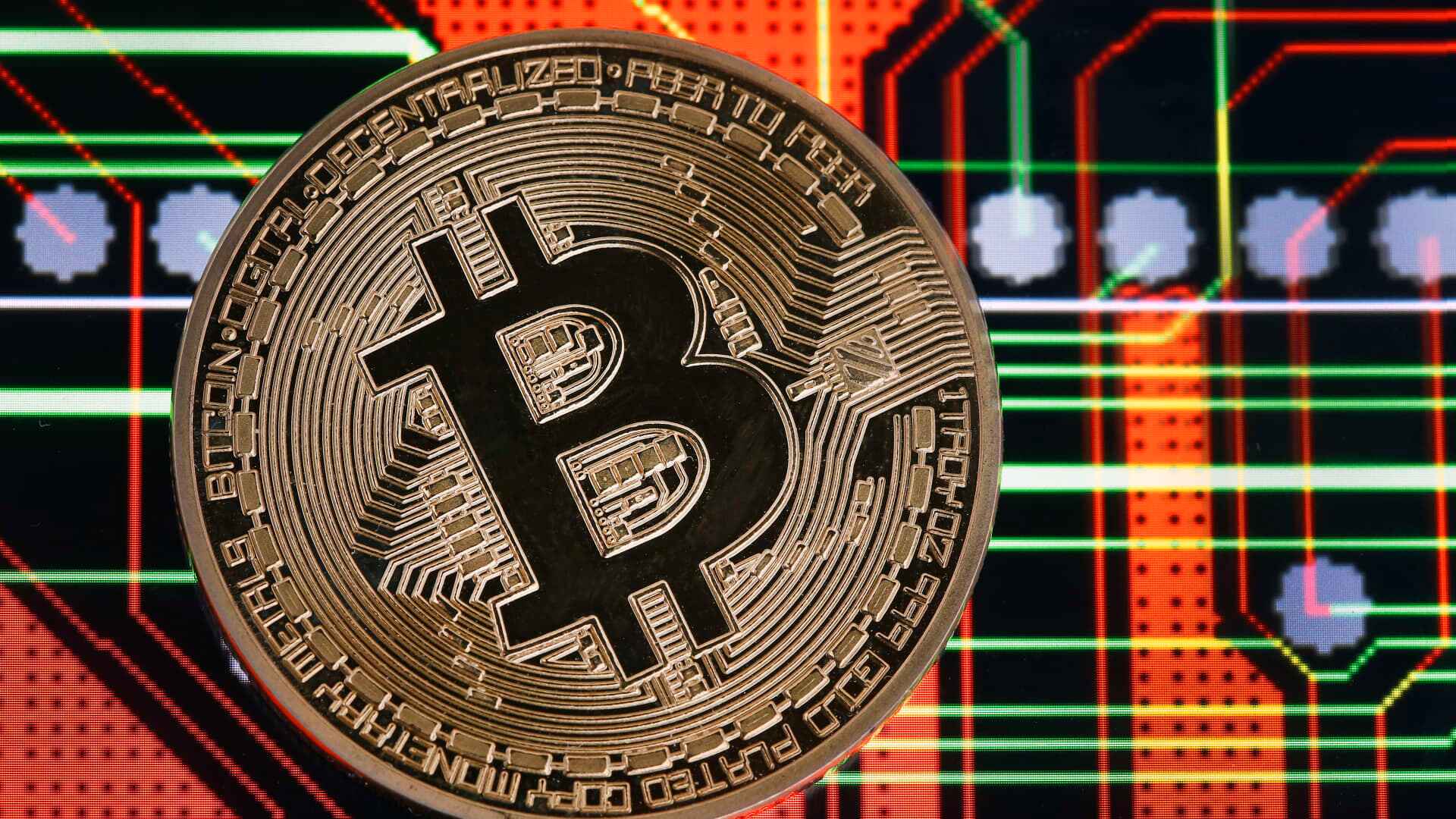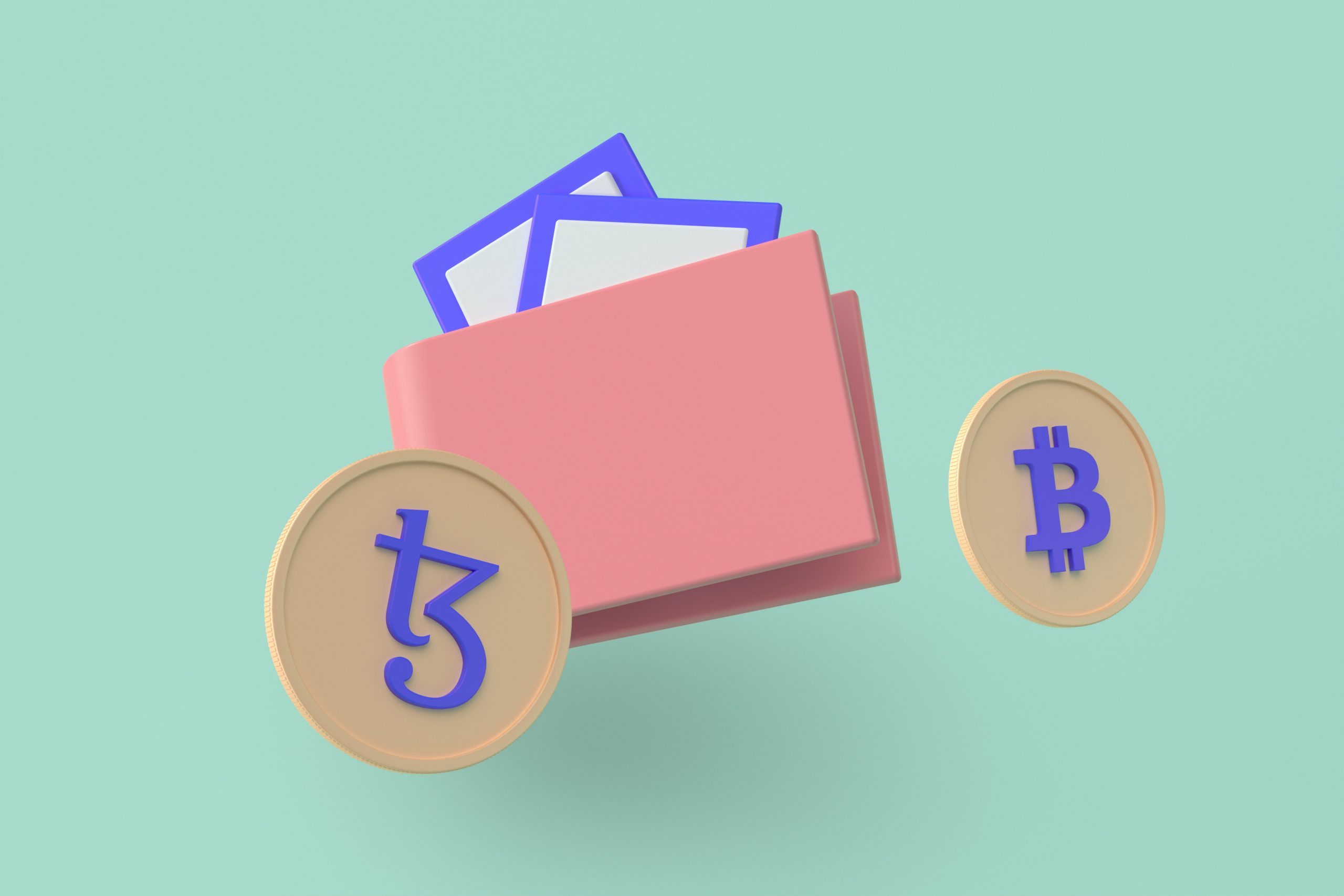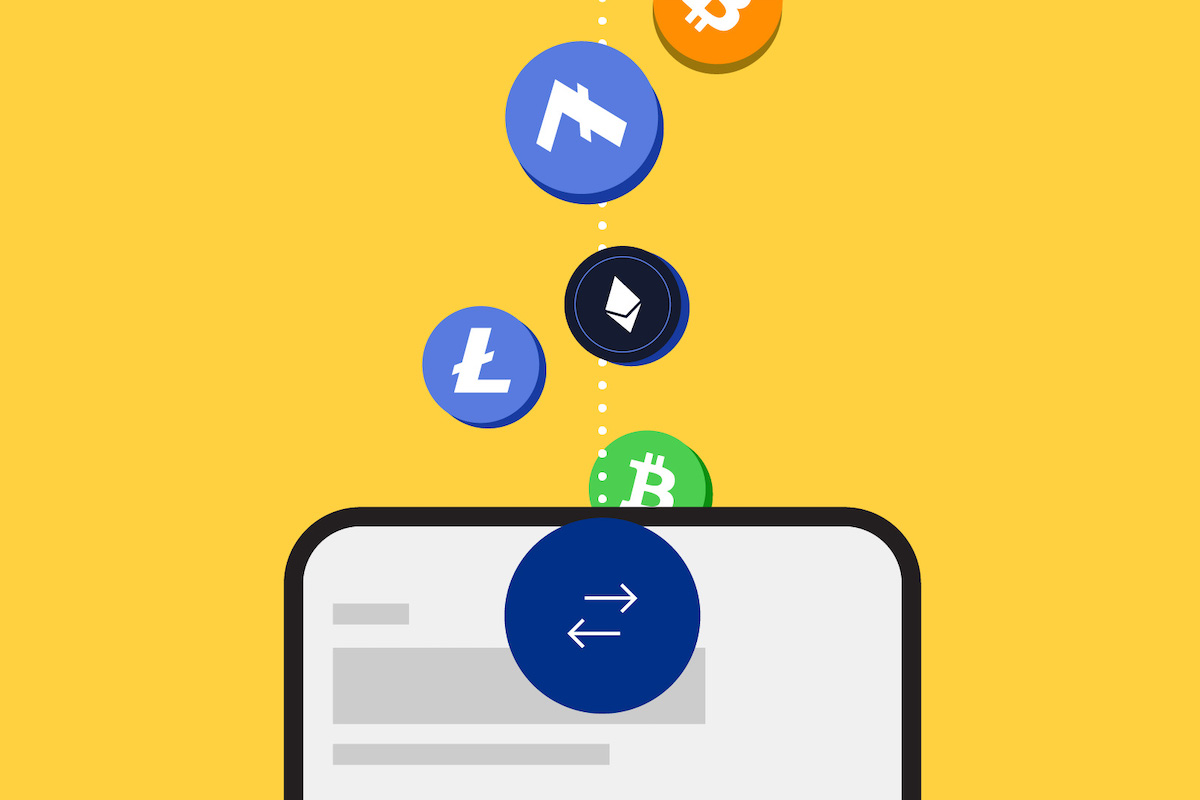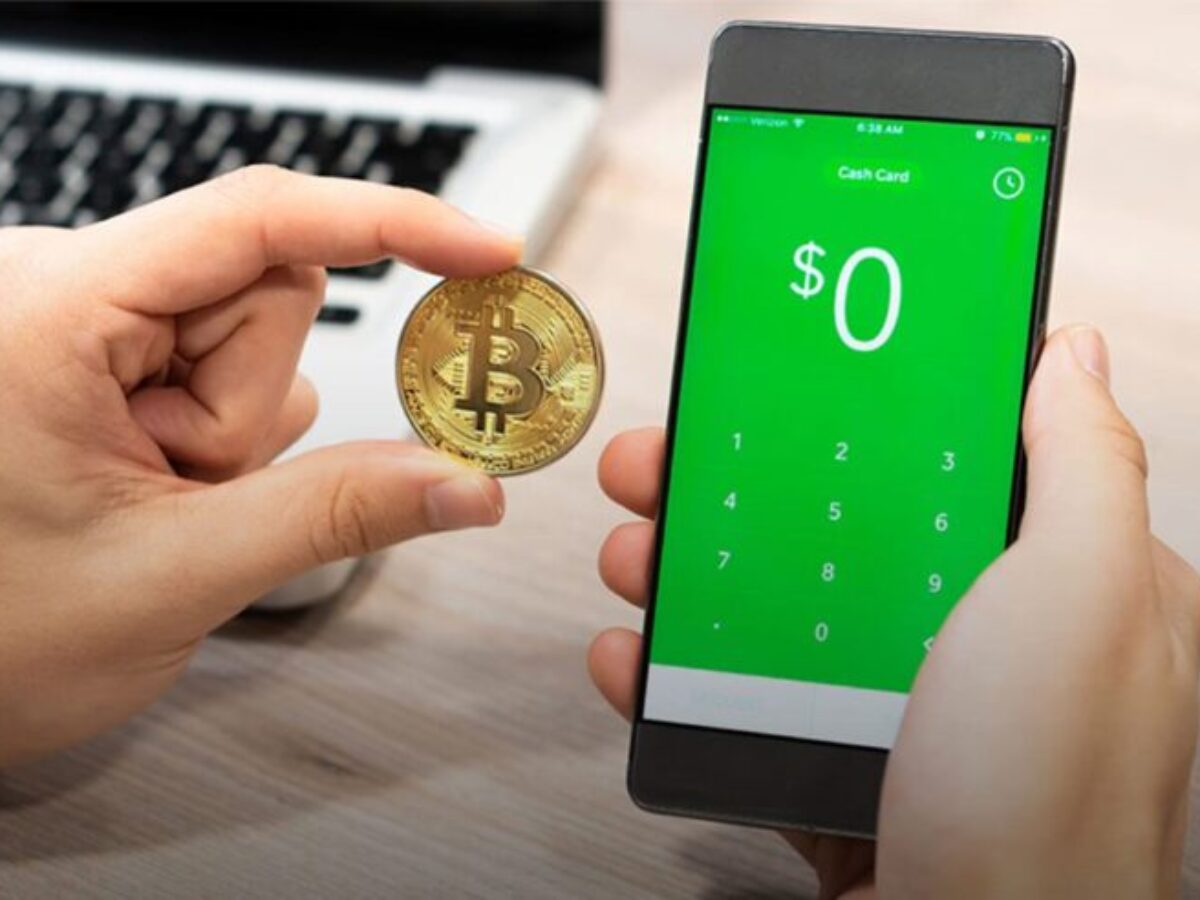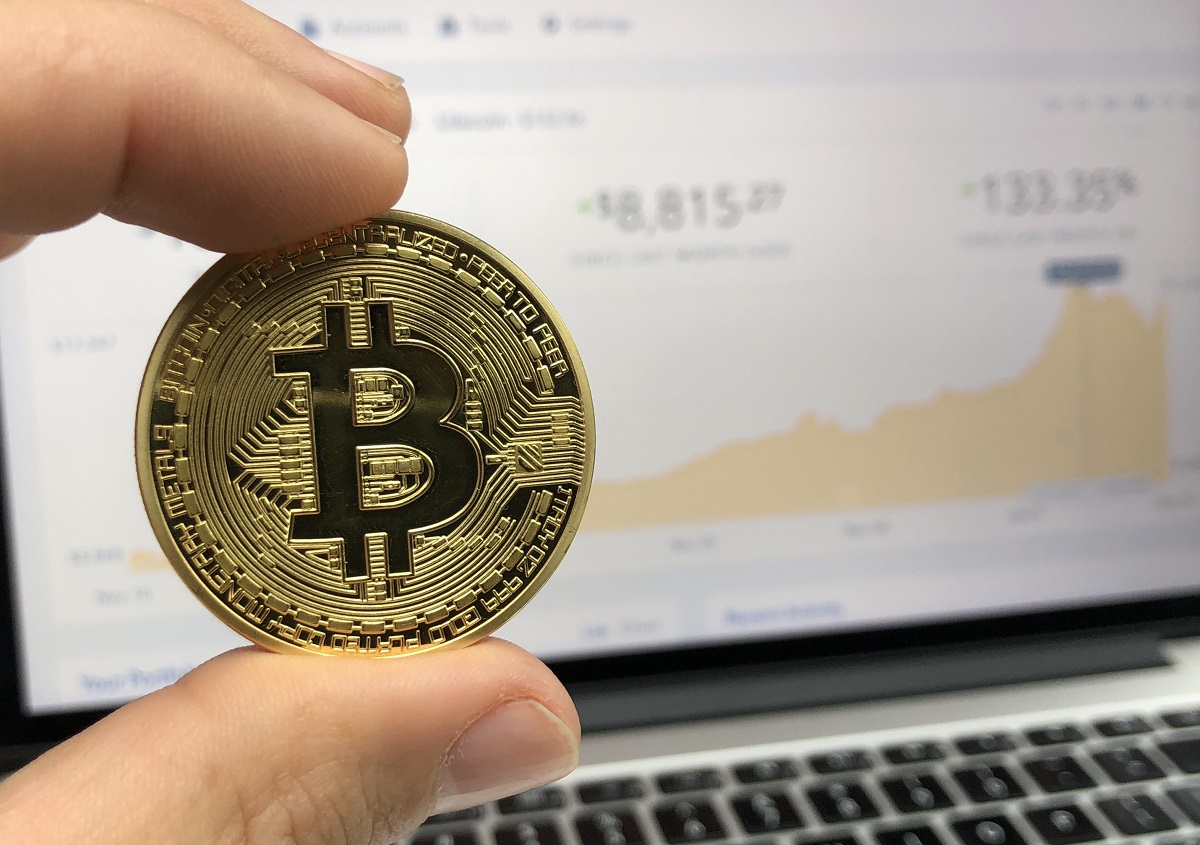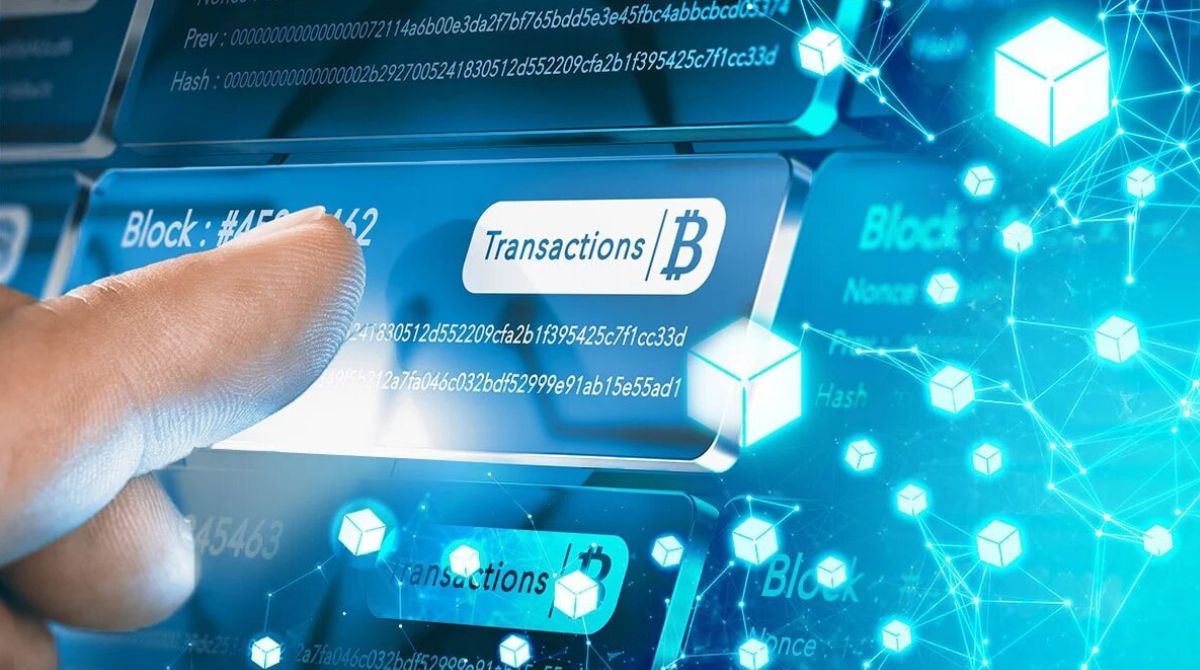Introduction
Blockchain technology has revolutionized the way we conduct transactions and store digital assets. One of the essential components of this technology is the blockchain wallet, which allows users to securely manage their cryptocurrencies and digital tokens. Within the blockchain wallet, there is a unique identifier called the Wallet ID. This Wallet ID plays a crucial role in facilitating transactions and providing access to your digital funds.
Whether you are new to cryptocurrencies or a seasoned investor, understanding the concept of a Wallet ID is key to navigating the world of blockchain technology. In this article, we will delve into the details of what a Wallet ID is, how it is generated, and its importance in maintaining security and accessibility.
In the following sections, we will explore the different types of Wallet IDs, the steps involved in creating one, and how to access your wallet using the provided ID. By the end of this article, you will have a solid understanding of the significance of a Wallet ID and its role in managing your digital assets securely.
Before we dive into the specifics, let’s take a closer look at what exactly a blockchain wallet is.
What is a Blockchain Wallet?
A blockchain wallet is a digital application or software that allows users to store, send, and receive cryptocurrencies. It serves as a secure, online repository for digital assets, similar to a traditional bank account for fiat currencies. However, unlike a conventional bank account, a blockchain wallet provides users with complete control over their funds, as there is no central authority governing the transactions.
In simple terms, a blockchain wallet is like a digital wallet or a virtual safe for your cryptocurrencies. It utilizes blockchain technology to keep track of your digital assets and records all transactions in a transparent and immutable manner. This means that every transaction made within the wallet is permanently recorded on the blockchain, ensuring its accuracy and integrity.
Blockchain wallets come in various forms, including web-based wallets, mobile wallets, desktop wallets, and hardware wallets. Each type has its own unique features and levels of security. Web-based wallets are typically accessible through a web browser, while mobile wallets are designed specifically for use on smartphones and tablets. Desktop wallets, on the other hand, are installed on personal computers, providing users with direct control over their funds. Hardware wallets, which resemble USB devices, offer the highest level of security as they store private keys offline, away from potential online threats.
What is a Wallet ID?
A Wallet ID is a unique alphanumeric identifier associated with a blockchain wallet. It acts as a digital address for your wallet and is used to send and receive funds within the blockchain network. Think of it as a virtual fingerprint that distinguishes your wallet from others.
The Wallet ID is often a long string of characters, consisting of both numbers and letters. It is generated using cryptographic algorithms and is designed to be highly secure and virtually impossible to replicate. Every blockchain wallet has a unique Wallet ID that serves as its identifier on the blockchain network.
Just like you would provide your physical address to receive mail, you would share your Wallet ID to receive digital assets. When someone wants to send you cryptocurrencies, they would need your Wallet ID to direct the funds to your wallet.
It’s important to note that Wallet IDs are different from private keys. While a Wallet ID is used for transactions and identification purposes, a private key is a separate piece of information that allows access to the actual funds stored in the wallet. The private key is kept confidential and should never be shared with anyone, as it provides full control over the assets.
Wallet IDs are specific to each blockchain network. For example, if you have a Bitcoin wallet, you will have a unique Bitcoin Wallet ID. If you have an Ethereum wallet, you will have a distinct Ethereum Wallet ID. This ensures that transactions and funds are kept separate within the respective blockchain networks.
Wallet IDs play a vital role in the seamless transfer of funds within the blockchain network. They eliminate the need to remember complex wallet addresses and make the process of sending and receiving funds more user-friendly. With just a simple alphanumeric code, you can securely access and manage your digital assets.
How is a Wallet ID Generated?
A Wallet ID is generated using complex cryptographic algorithms that ensure its uniqueness and security. The specific process varies depending on the blockchain technology being used, but the underlying principles remain similar across different networks.
When you create a new blockchain wallet, the Wallet ID is generated automatically for you. The generation process involves the creation of a public key and a corresponding private key. The public key is derived from the private key using cryptographic functions.
In some cases, the Wallet ID is a hashed version of the public key. A hash function is used to convert the longer public key into a fixed-length string of characters. This process serves two purposes: it reduces the length of the Wallet ID for convenience, and it adds an extra layer of security by making it virtually impossible to reverse engineer the private key from the public key.
Another method of Wallet ID generation involves the use of different cryptographic algorithms, such as elliptic curve cryptography (ECC). ECC algorithms are particularly well-suited for generating Wallet IDs as they offer a high level of security with relatively short keys.
Once the Wallet ID is generated, it is associated with your blockchain wallet and stored securely in the network. It is important to note that the Wallet ID itself does not provide access to the funds stored in the wallet. To access and control the assets, you will need to utilize the private key associated with the Wallet ID.
Overall, the process of generating a Wallet ID involves creating a unique identifier using advanced cryptographic techniques. This ensures the security and integrity of the wallet and provides a seamless means of sending and receiving funds within the blockchain network.
Purpose of the Wallet ID
The Wallet ID serves several important purposes within the blockchain ecosystem. Understanding its purpose is crucial for efficiently managing and securing your digital assets. Here are the key reasons why a Wallet ID is essential:
1. Transactional Identification: The Wallet ID acts as a unique identifier for your blockchain wallet. When you initiate a transaction, either sending or receiving funds, the Wallet ID is used to identify the sender and the recipient. This ensures that transactions are accurately routed within the blockchain network.
2. Address Generation: A Wallet ID is used to generate a specific address for your blockchain wallet. This address is the destination where funds can be sent. It typically consists of a combination of alphanumeric characters that form the complete address. Instead of sharing the long address, you can provide your Wallet ID to receive funds conveniently.
3. Streamlined Fund Management: The Wallet ID simplifies the process of managing your digital assets. By using a unique identifier, you can easily view your wallet balance, track transaction history, and monitor incoming and outgoing funds. This streamlines the management of your cryptocurrencies and provides a holistic view of your financial activities.
4. Enhanced Security: The Wallet ID contributes to the security of your blockchain wallet. As a digital address, it eliminates the need to disclose sensitive personal information during transactions. Additionally, it ensures that only the rightful owner of the Wallet ID can access and manage the associated funds.
5. Compatibility: Wallet IDs are specific to each blockchain network. This means that if you have different cryptocurrencies or tokens, you will have different Wallet IDs for each. This compatibility ensures that transactions are carried out within the appropriate blockchain and prevents cross-network confusion.
Overall, the purpose of the Wallet ID is to provide a unique identification mechanism for your blockchain wallet, streamline fund management, enhance security, and ensure compatibility within the blockchain network. By utilizing a Wallet ID, you can confidently and securely engage in transactions and manage your digital assets.
Importance of Wallet ID Security
Ensuring the security of your Wallet ID is of utmost importance when it comes to managing your digital assets. The Wallet ID serves as a gateway to your blockchain wallet, and if compromised, it can result in the loss of your funds. Here are the key reasons why Wallet ID security is crucial:
1. Protection against Unauthorized Access: Your Wallet ID acts as a unique identifier for your blockchain wallet. By keeping your Wallet ID secure, you prevent unauthorized individuals from gaining access to your funds. It is essential to treat your Wallet ID with the same level of care and confidentiality as you would treat your banking information or passwords.
2. Prevention of Identity Theft: With the rise in cybercrime, protecting your personal information is paramount. A compromised Wallet ID could potentially lead to identity theft, where malicious actors can impersonate you and gain control over your assets. By maintaining the security of your Wallet ID, you minimize the risk of falling victim to identity theft.
3. Safekeeping of Digital Assets: Your Wallet ID is directly linked to your digital assets. If someone gains access to your Wallet ID, they can transfer or steal your funds. By prioritizing Wallet ID security, you can safeguard your hard-earned cryptocurrencies and tokens, preventing potential financial losses.
4. Mitigation of Fraud and Scams: The Blockchain space is not immune to fraudsters and scams. Hackers and individuals with malicious intent may attempt to trick or deceive you into revealing your Wallet ID. By practicing strict Wallet ID security measures, you reduce the risk of falling victim to fraudulent activities and scams.
5. Preservation of Privacy: Protecting your Wallet ID ensures the privacy of your transactions. The more secure your Wallet ID is, the less likely it is for your financial activities to be traced or monitored by external parties. This protects your privacy and maintains the anonymity often associated with blockchain transactions.
To enhance the security of your Wallet ID, it is crucial to follow best practices. These may include utilizing hardware wallets, using strong and unique passwords, enabling two-factor authentication, regularly updating your wallet software, and staying vigilant against phishing attempts.
Remember, your Wallet ID is the key to accessing and managing your digital assets securely. By prioritizing its security, you can have peace of mind knowing that your funds are protected in the ever-evolving world of blockchain technology.
Types of Wallet IDs
There are several types of Wallet IDs used in the blockchain ecosystem, each with its own characteristics and level of security. Let’s explore some of the common types:
1. Public Key: The public key is a type of Wallet ID that is generated using cryptographic algorithms. It is derived from the private key and is used to receive funds. Public keys are typically long strings of alphanumeric characters and are often represented in different formats, such as hexadecimal.
2. Hashed Wallet ID: Some blockchain wallets generate a hashed version of the public key as the Wallet ID. Hash functions are used to convert the longer public key into a fixed-length string. This provides a shorter, more convenient representation of the Wallet ID while maintaining security and privacy.
3. QR Code: A QR code is a two-dimensional barcode that can store Wallet ID information. It acts as a convenient way to share your Wallet ID with others, as it can be easily scanned using a mobile device. QR codes are commonly used in mobile wallet applications for seamless transactions.
4. Mnemonic Phrase: Some wallets use a mnemonic phrase, also known as a seed phrase or recovery phrase, as a Wallet ID. This phrase consists of a series of words that act as a backup for your wallet. It can be used to regenerate your Wallet ID and access your funds in case you lose or forget your original Wallet ID.
5. Address Alias: Certain blockchain networks allow users to create address aliases as Wallet IDs. Instead of using a long alphanumeric string, the user can assign a personalized name or label to their Wallet ID. This makes it easier to remember and share the Wallet ID with others.
It’s important to note that while different blockchain wallets may use different types of Wallet IDs, the underlying principle remains the same: to provide a unique identifier for the wallet and facilitate secure transactions within the blockchain network.
Regardless of the type of Wallet ID used, it is crucial to ensure the security and confidentiality of your Wallet ID, as it directly affects the safety of your digital assets. Implementing proper security measures and following best practices will help safeguard your Wallet ID and protect your funds.
How to Create a Wallet ID
Creating a Wallet ID is a straightforward process that varies depending on the blockchain wallet you choose. Here are the general steps to create a Wallet ID:
1. Choose a Blockchain Wallet: Select a blockchain wallet that aligns with your needs and preferences. Consider factors such as security features, user interface, supported cryptocurrencies, and device compatibility. Popular wallet options include Exodus, MyEtherWallet, Ledger Live, and MetaMask.
2. Download and Install the Wallet Software: If you opt for a software-based wallet, download and install the respective wallet software on your chosen device. Ensure that you download the software from the official website to minimize the risk of downloading malicious software.
3. Follow the Wallet Setup Process: Launch the wallet software and follow the setup process. This typically involves creating a new wallet or restoring a wallet if you already have one. The software will guide you through the steps and prompt you to set a secure password and agree to the terms and conditions.
4. Generate Your Wallet ID: Once the setup process is complete, the wallet software will automatically generate a unique Wallet ID for you. This Wallet ID may be in the form of a public key, a hashed version of the public key, or a mnemonic phrase. Make sure to note down or securely store this information as it is crucial for accessing and managing your funds.
5. Backup Your Wallet: It is crucial to create a backup of your wallet and store it in a secure location. Some wallets provide a recovery phrase or seed phrase, which can be used to restore your wallet if you lose access to your Wallet ID. Follow the backup instructions provided by your wallet software and ensure that you keep your backup in a safe and confidential manner.
6. Test Your Wallet ID: Before transferring significant funds to your wallet, it is advisable to perform a test transaction. Send a small amount of cryptocurrency to your Wallet ID and ensure that the transaction is successfully processed. This will help you familiarize yourself with the wallet interface and confirm that your Wallet ID is functioning correctly.
Remember to stay vigilant throughout the wallet creation process. Be wary of phishing attempts and ensure that you are using trusted sources when downloading wallet software or accessing wallet websites.
By following these steps, you can create a Wallet ID and start securely managing your digital assets within the blockchain network.
How to Access a Wallet Using the ID
Once you have created a wallet and obtained your Wallet ID, accessing your wallet to manage your digital assets is a straightforward process. Here’s how to access a wallet using the ID:
1. Open the Wallet Software: Launch the wallet software or application on your chosen device. Enter any necessary login information, such as your username and password, to access the wallet interface. Some wallets may offer additional authentication methods, such as biometrics or two-factor authentication for added security.
2. Enter Your Wallet ID: Within the wallet interface, locate the option to access or restore a wallet. This may be labeled as “Access Wallet,” “Import Wallet,” or a similar term. Select this option and enter your Wallet ID when prompted. Depending on the wallet software, you may need to select the type of Wallet ID you are using, such as a public key, mnemonic phrase, or QR code.
3. Provide Additional Information: Depending on the wallet, you may need to provide additional information for verification purposes. This could include your password, biometric authentication, or any other security measures you have set up for your wallet account. Follow the prompts and provide the necessary information to proceed with accessing your wallet.
4. Confirm Security Measures: As an added layer of security, some wallets may require you to confirm specific security measures associated with your wallet. This could include verifying a recovery phrase, confirming a device authorization, or completing a multi-factor authentication process. Ensure that you carefully follow the instructions provided by the wallet software to successfully access your funds.
5. Access and Manage Your Wallet: Once you have successfully entered your Wallet ID and completed any necessary security verifications, you will be granted access to your wallet. From the wallet interface, you can view your balance, send and receive funds, monitor transaction history, and perform other management tasks specific to your wallet software.
Remember to keep your Wallet ID secure and never share it with anyone. Additionally, ensure that you are accessing your wallet from trusted sources and devices to minimize the risk of unauthorized access or compromise.
By following these steps, you can easily access your wallet using the provided Wallet ID and take advantage of the features and functionalities offered by your chosen wallet software.
Conclusion
Understanding the concept of a Wallet ID is essential for effectively managing your digital assets within the blockchain ecosystem. A Wallet ID serves as a unique identifier for your blockchain wallet, allowing you to send and receive funds securely. It plays a crucial role in facilitating transactions, ensuring the accuracy and integrity of each transaction within the blockchain network.
In this article, we have explored what a Wallet ID is and how it is generated using cryptographic algorithms. We have discussed the importance of Wallet ID security in protecting your funds and preventing unauthorized access. By prioritizing Wallet ID security, you can safeguard your digital assets, mitigate the risk of fraud and scams, and maintain your privacy.
We have also examined the different types of Wallet IDs, such as public keys, hashed Wallet IDs, QR codes, mnemonic phrases, and address aliases. Each type offers unique features and levels of convenience, allowing you to choose the most suitable option for your needs.
Lastly, we have discussed how to create a Wallet ID and access your wallet using the Wallet ID. The process involves selecting a suitable blockchain wallet, downloading and installing the wallet software, generating a Wallet ID, and implementing proper security measures to protect your funds.
Remember, securing your Wallet ID is crucial for maintaining the integrity and safety of your digital assets. Always follow best practices for wallet security, such as using strong and unique passwords, enabling two-factor authentication, and regularly updating your wallet software.
With a solid understanding of Wallet IDs and their significance, you are well-equipped to navigate the world of blockchain technology. By prioritizing Wallet ID security and following established protocols, you can confidently manage your digital assets and engage in secure transactions within the blockchain network.







